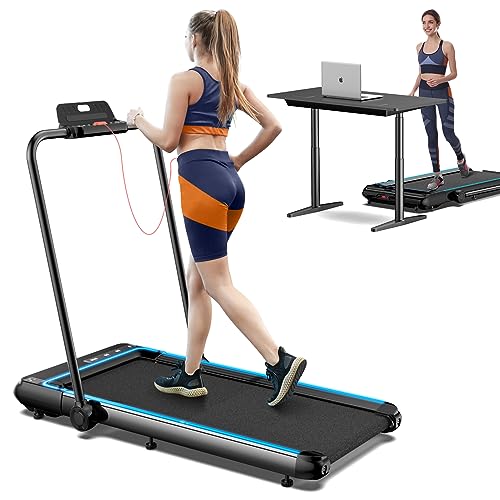
Treadmill Without Electricity
Add a review FollowOverview
-
Founded Date September 23, 1926
-
Sectors Catering Department jobs
-
Posted Jobs 0
-
Viewed 5
Company Description
Non Powered Treadmill Tools To Make Your Daily Life Non Powered Treadmill Trick That Everybody Should Be Able To
The Rise of Non-Powered Treadmills: A Deep Dive into Their Benefits and Features
In a world increasingly focused on health, health, and fitness, the options for workout equipment seem unlimited. Amongst these, non-powered treadmills are getting substantial traction. These machines, which do not depend on electrical power to run, use a special mix of advantages and advantages that deal with a diverse audience. This blog site post explores the features, advantages, and factors to consider related to non-powered treadmills, while likewise responding to typical concerns surrounding them.
What is a Non-Powered Treadmill?
A non-powered treadmill, often referred to as a manual treadmill, is a kind of treadmill that is operated by the user’s movement instead of an electric motor. Users power the belt forward by walking or running, making it a flexible alternative for cardio exercises. Non-powered treadmills are typically seen in home gyms, physical fitness studios, and rehab centers due to their simpleness and effectiveness.
Contrast: Non-Powered vs. Powered Treadmills
To understand the growing popularity of non powered treadmill – notes.io –powered treadmills, it’s crucial to compare them against their powered equivalents. The table listed below highlights some crucial distinctions:
| Feature | Non-Powered Treadmill | Powered Treadmill |
|---|---|---|
| Source of power | Manual (user-driven) | Electric (motor-driven) |
| Cost | Normally more affordable | Frequently more costly |
| Upkeep | Low upkeep needs | Higher maintenance requirements |
| Area Requirements | Generally less large | Can be big and heavy |
| Incline Adjustment | Manual changes | Automatic settings available |
| Exercise Intensity | Variable; depends upon user effort | Consistent; speeds set by the user |
| Danger of Injury | Lower, promotes natural movement | Greater, due to speed settings |
Training Benefits of Non-Powered Treadmills
Engagement of Core Muscles: Non-powered treadmills demand a higher level of balance and core engagement. Users should stabilize themselves, which in turn includes core strength into the workout.
Natural Running Mechanics: As users propel the tread, they simulate natural running or walking techniques, minimizing the dangers of injury connected with busy powered treadmills.
Adjustable Speed and Intensity: Because the treadmill counts on user effort, people can pick their workout speed, making it perfect for both beginners and advanced professional athletes.
Increased Caloric Burn: Research indicates that users may burn more calories on a non-powered Self Propelled Treadmill compared to a powered one at comparable intensities. The factor? Manual treadmills can push the body to work harder and to maintain a higher level of strength throughout the workout.
Toughness: Non-powered treadmills are generally more rugged and built to last, with less electronic elements that may stop working in time.
Considerations for Choosing a Non-Powered Treadmill
Before buying, prospective purchasers need to consider the following features:
| Feature | Considerations |
|---|---|
| Weight Limit | Guarantee it matches your body type and needs |
| Belt Size | A larger belt can provide more comfort, especially for running |
| Incline Settings | Look for alternatives to adjust incline for varying exercise strength |
| Frame Construction | Select durable products that can withstand rigorous use |
| Portability | Think about models that are simple to move or keep out of the way |
Regularly Asked Questions (FAQ)
1. Are non-powered treadmills appropriate for everyone?Yes, these treadmills are usually ideal for users of all fitness levels. However, individuals with particular health concerns need to speak with a physician before beginning any brand-new exercise program.
2. Just how much do non-powered treadmills cost?Costs can differ widely, usually varying from ₤ 200 to upwards of ₤ 2,000 based upon quality and functions. Manual Incline Treadmill alternatives tend to be more budget-friendly than powered versions.
3. How do I maintain a non-powered treadmill?Upkeep tends to be very little; merely guarantee that the belt is clean and check for wear and tear sometimes. It’s also crucial to keep moving parts oiled for smooth operation.
4. Can I run or stroll on a non-powered treadmill?Yes, non-powered treadmills are created for both walking and running. Users can change their workout strength based on speed and stride.
5. Do I require to change the incline manually?Yes, many non-powered treadmills require Manual Walking Pad Uk modifications for incline changes, enabling users to vary their workouts as desired.
The non-powered treadmill stands as a useful and efficient exercise service, perfect for those aiming to improve their workout routine without the intricacies of powered makers. By offering an extensive exercise that engages the core and works the body holistically, these treadmills are designed to produce an effective cardio experience that caters to all physical fitness levels. Their cost, resilience, and total effectiveness for calorie burning add to their rise in popularity.
Whether you are an experienced athlete searching for a harder exercise or a newbie taking those primary steps toward physical fitness, non-powered treadmills offer a welcoming alternative to the standard electric treadmill. With the included benefit of lower upkeep and cost, they are worthy of consideration on your physical fitness journey.
